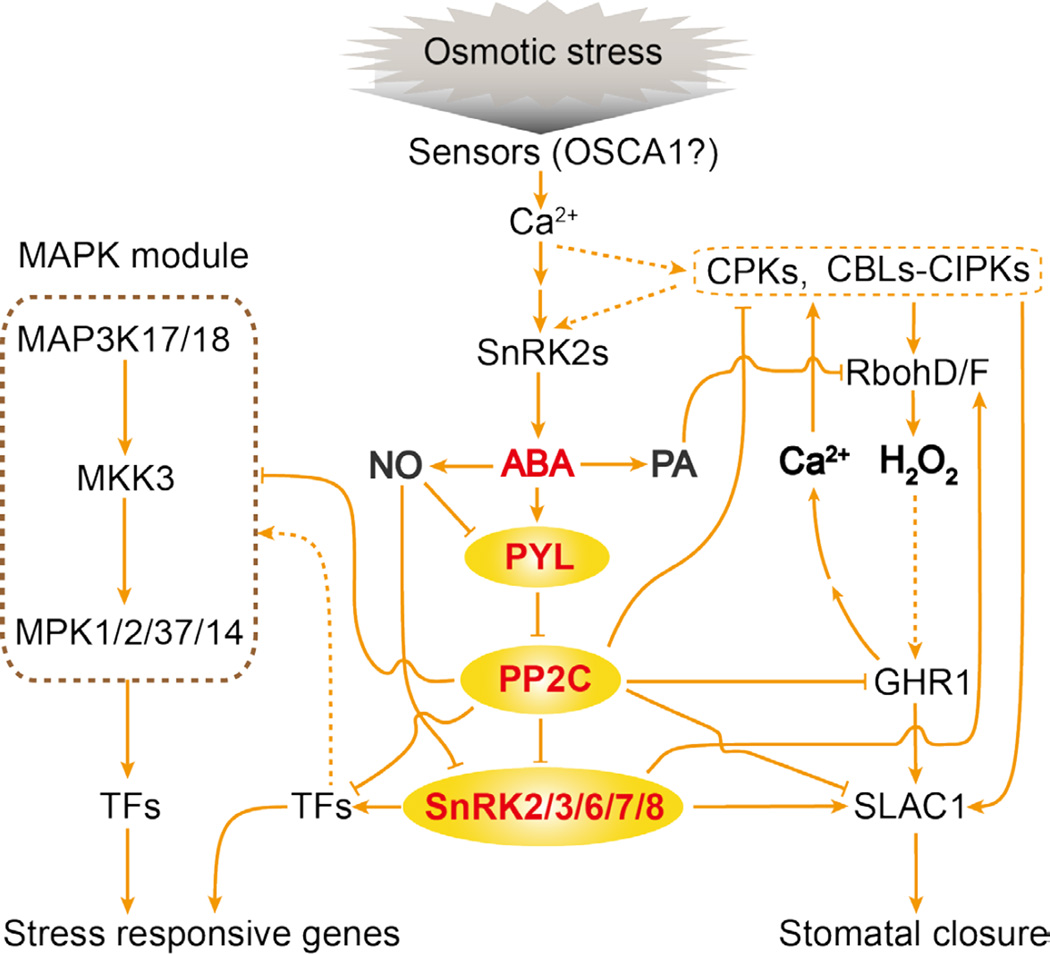Figure 3.
Osmotic stress and ABA sensing and signaling. The Ca2+ channel OSCA1 may participate in osmosensing. The resulting Ca2+ signal may activate CPKs and CBLs-CIPKs. Eventually, SnRK2s are activated, which leads to ABA accumulation. ABA binds to PYLs, which then interact with and inhibit class A PP2Cs, resulting in the activation of SnRK2.2/3/6/7/8. The activated SnRK2s phosphorylate effector proteins including TFs (transcription factors), SLAC1 and RbohD/F. RbohD/F generates H2O2, which elicits a Ca2+ signal through GHR1. This Ca2+ signal activates CPKs and CBLs-CIPKs that also phosphorylate effector proteins such as SLAC1. In addition to Ca2+, ABA also induces the second messengers NO (nitric oxide), and PA (phosphatidic acid) and other phospholipids. NO inhibits SnRK2s and PYLs, and PA regulates proteins like Rbohs. Also depicted is ABA activation of a MAP kinase module. Components of the core ABA signaling pathway are colored in red. Arrows indicate activation, bars indicate inhibition, and dashed lines indicate postulated regulation.

